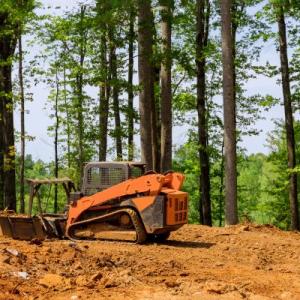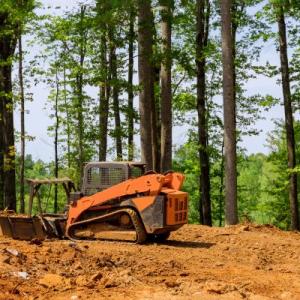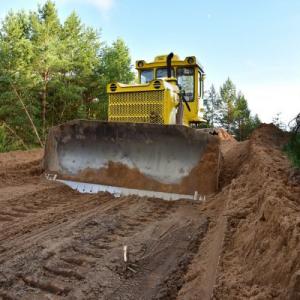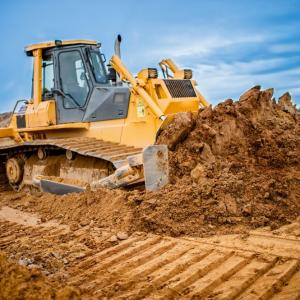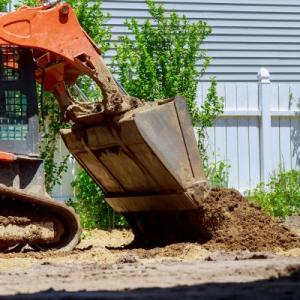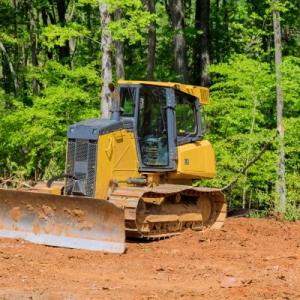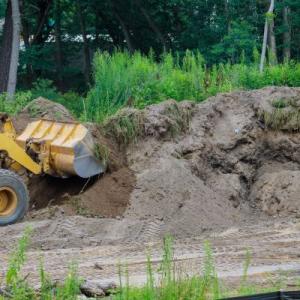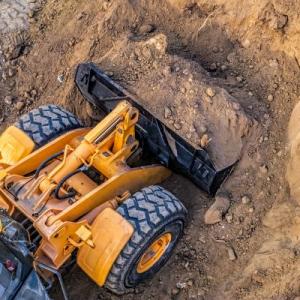Ground Reshaping: Lafayette
Ground Reshaping in Lafayette
Get help with Ground Reshaping in Lafayette. Fill out the form above and we will connect you with local Lafayette pros. Ground reshaping offers a multitude of advantages for property owners looking to enhance their outdoor spaces. This process allows for the transformation of uneven or sloping terrain into a level and functional surface. By reshaping the ground, homeowners can create a more visually appealing landscape that is easier to navigate and maintain. Additionally, ground reshaping can improve water drainage, preventing potential flooding and water damage. It also provides an opportunity to create new outdoor living areas, such as patios or gardens, that can be enjoyed year-round. With ground reshaping, property owners can unlock the full potential of their land, creating a harmonious and inviting environment for themselves and their guests.Earthworks
Earthworks is a crucial process that involves the excavation, shaping, and moving of soil and rock to prepare a site for construction or landscaping purposes. This service plays a fundamental role in various projects, such as building foundations, road construction, and land development. By employing earthworks, the land can be properly leveled, graded, and compacted, ensuring stability and structural integrity for future construction. Additionally, earthworks can help with drainage and erosion control, preventing potential damage to the surrounding environment. With the expertise and equipment required for earthworks, professionals can efficiently and effectively transform a raw site into a well-prepared foundation for any construction or landscaping project.Land Grading
Land grading is a crucial process that involves reshaping the surface of the land to ensure proper drainage and prevent erosion. By creating a level and even surface, land grading helps in improving the overall functionality of the land. It allows for efficient water runoff, minimizing the risk of flooding and water damage to structures. Additionally, land grading provides a stable foundation for construction projects, ensuring the longevity and stability of buildings. Moreover, it helps in enhancing the aesthetic appeal of the land by creating a smooth and uniform surface. Overall, land grading plays a vital role in maintaining the integrity and functionality of the land, making it an essential step in various land development projects.Terrain Modification
Terrain modification is a process that involves altering the physical characteristics of a land area to enhance its functionality and aesthetics. It offers several benefits to property owners and developers. Firstly, terrain modification allows for efficient land utilization by leveling uneven surfaces, removing obstacles, and creating a more uniform topography. This enables easier construction, better drainage, and improved accessibility for various purposes such as building structures, roads, or landscaping. Additionally, terrain modification can enhance the visual appeal of a property by transforming rough or unattractive terrains into well-groomed landscapes. It also provides opportunities for better utilization of space, allowing for the creation of gardens, recreational areas, or other desired features. Overall, terrain modification offers a practical and visually appealing solution to optimize land use and improve the overall value of a property.Land Contouring
Land contouring, also known as land grading or land leveling, is a process that involves reshaping the surface of a piece of land to achieve a desired slope or contour. This technique offers several benefits for property owners and developers. Firstly, land contouring helps to improve drainage by ensuring that water flows away from buildings and structures, preventing potential flooding and water damage. Additionally, it aids in soil conservation by reducing erosion and soil runoff. Land contouring also enhances the aesthetic appeal of the land, creating a more visually pleasing and harmonious environment. Moreover, it provides a level surface for construction projects, making it easier to build foundations, roads, and other structures. Overall, land contouring is a valuable technique for optimizing land functionality and improving its overall value.Topographic Reshaping
Topographic reshaping is a process that involves modifying the natural contours of a landscape to achieve a desired outcome. This technique offers a range of benefits for various applications. It allows for the creation of functional and aesthetically pleasing landforms, such as terraced gardens, leveled lawns, or even the construction of artificial ponds and lakes. Topographic reshaping can also help with improving drainage and preventing erosion, as it redirects water flow and stabilizes slopes. Additionally, it can be used to optimize land use by creating more usable space for construction or recreational purposes. This method is widely employed in landscaping, urban planning, and environmental restoration projects to enhance the overall functionality and visual appeal of a site.Landscape Reformation
Landscape Reformation offers a professional and comprehensive approach to transforming outdoor spaces. This service focuses on enhancing the aesthetic appeal and functionality of landscapes through strategic design and implementation. By utilizing expert knowledge and industry-leading techniques, Landscape Reformation ensures that every project is executed with precision and attention to detail. The benefits of choosing Landscape Reformation include improved curb appeal, increased property value, enhanced outdoor living spaces, and the creation of a harmonious environment that complements the natural surroundings. With Landscape Reformation, clients can expect a tailored and efficient process that delivers remarkable results for their outdoor spaces.Ground Reshaping FAQ
Q: How Long Does Ground Reshaping Typically Take To Complete?
Answer: The duration of ground reshaping projects can vary depending on various factors such as the size of the area, complexity of the terrain, availability of resources, and the specific techniques used. However, on average, ground reshaping typically takes several weeks to several months to complete.Q: What Are Some Common Challenges Or Obstacles That Can Arise During Ground Reshaping Projects?
Answer: Some common challenges or obstacles that can arise during ground reshaping projects include issues with soil stability, drainage problems, unexpected underground utilities or structures, environmental regulations and permits, and budget constraints.Q: Are There Any Specific Factors Or Considerations To Keep In Mind When Planning Ground Reshaping For A Sloped Or Uneven Terrain?
Answer: Yes, there are several specific factors and considerations to keep in mind when planning ground reshaping for a sloped or uneven terrain. These may include assessing the slope stability, determining the appropriate grading techniques, considering drainage and erosion control measures, and ensuring compliance with local regulations and permits.Q: What Are The Potential Benefits Or Advantages Of Ground Reshaping For Landscaping Or Property Development Purposes?
Answer: Ground reshaping for landscaping or property development purposes offers several potential benefits or advantages. These include: 1. Improved aesthetics: Reshaping the ground allows for the creation of visually appealing landscapes, enhancing the overall beauty and attractiveness of the property. 2. Enhanced functionality: By reshaping the ground, it becomes possible to optimize the use of space, creating areas for various activities such as gardening, outdoor entertainment, or recreational purposes. 3. Better drainage and erosion control: Ground reshaping can help address drainage issues by creating slopes or contours that facilitate proper water flow. This can prevent water accumulation and reduce the risk of erosion. 4. Increased property value: A well-designed and properly reshaped landscape can significantly increase the value of a property, making it more desirable to potential buyers or tenants. 5. Environmental benefits: Ground reshaping can be used to create sustainable landscapes that promote biodiversity, reduce water consumption, and support the growth of native plants. This can contribute to a healthier and more eco-friendly environment. Overall, ground reshaping for landscaping or property development purposes can transform a property into a functional, visually appealing, and valuable space while also addressing environmental concerns.Ground reshaping is a process that involves altering the shape and contours of the ground to achieve a desired outcome. It is typically done to improve the functionality and aesthetics of outdoor spaces. Ground reshaping can include activities such as excavation, grading, and leveling, as well as the addition or removal of soil and other materials. This process is commonly used in landscaping, construction, and land development projects to create a more even and stable surface, correct drainage issues, or prepare the ground for further construction or planting. Ground reshaping requires expertise and specialized equipment to ensure precise and effective results.

